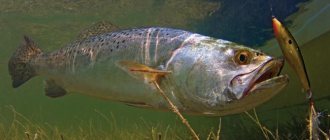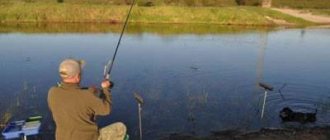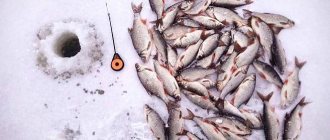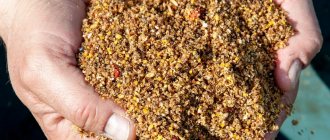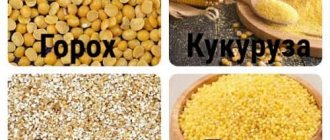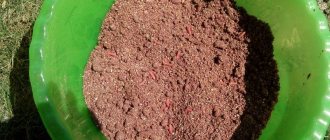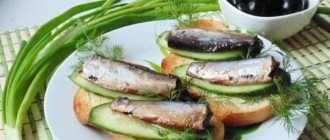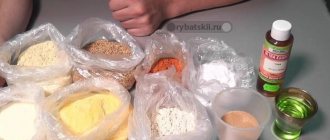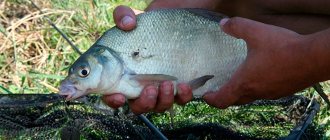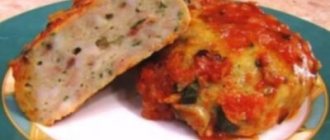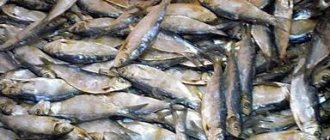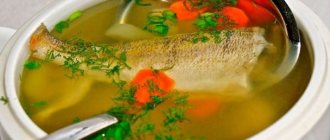Fishing will be effective with the correct selection and use of bait mixtures. Fishing for predatory fish, namely perch, is very popular. He is an omnivore, and fishermen did not fail to take advantage of this. On the shelves of specialized stores there is a large selection of a wide variety of baits for perch. Those interested can purchase ready-made branded mixtures. However, judging by the reviews, many anglers prefer to fish with homemade bait. Knowing the technology of their preparation, as well as the taste preferences of this fish, it will not be difficult to make such a mixture. You will find information on how to make bait for perch in this article.
Acquaintance
Perch is a predatory fish that constantly lives in large or small schools. Unlike pike and pike perch, it feeds on small animals: bloodworms, maggots, worms, etc. This should be taken into account by those who are planning to make bait for perch with their own hands. The bait mixture must contain exactly these components. Judging by the reviews of fishermen, problems with purchasing these ingredients usually do not arise. For example, food bloodworms are obtained exclusively for the preparation of various bait mixtures, and are sold in every fishing store. Beginners are mainly interested in the technology of preparing bait for perch with their own hands. Recipes for the most catchy ones are further in the article.
About feed mixture for summer fishing
At this time of year, the habitat of perch is thickets, snags, underwater holes and pools. According to experts, the most effective bait for perch in the summer will be a mixture based on earthworms. In addition, many fishermen season their mixtures with bloodworms, mussels, amphipods, pond snails, and leftover meat and offal. Sand can be used as bait. If you throw a small part of it into the water, the perch, due to its natural curiosity, will swim closer. Some fishermen use clotted blood. You can also use a special preparation “Albumin”, with which fishermen soak bread crumbs and throw them into the water. According to experts, eggs, fry and invertebrates are also of great value for perch in the summer. Do-it-yourself bait should be made from animal residues.
Feeding technique
A successful catch of perch does not rely on bait alone. Feeding technique plays a very important role. When hunting for perch, you should take into account all the features of the conditions. It happens that perches are not attracted to bloodworms, and then it is worth trying to catch with fry. It is necessary to take into account depth, current, time of day and season. Feeding tactics also vary, it all depends on how the fish bites.
Professionals advise that if possible, you should start feeding the fish a few days before fishing in large portions.
In the summer, bait can be rolled into clay balls; they have an additional effect, creating a cloud of turbidity when they touch the bottom. You should throw the balls near the floats. Under any conditions, the secondary feeding method works well, or you can simply throw clotted blood into the water.
In winter, for complementary feeding, it is good to use stationary feeders (used in high currents) or drop-down feeders (used in standing water). If the depth is large or there is a strong current, then it is best to use a feeder; it should be opened almost above the bottom. The fish group in one place, and their sense of competition awakens, they begin to react aggressively to the bait. In this case, you should fish exactly above the bait site.
If the depth is shallow or there is no current, then you can feed the fish directly “by hand,” that is, throw the bait directly into the hole, or open the feeder immediately under the ice. Accordingly, it is worth fishing not only near the day itself, but throughout the entire thickness of the water. At the same time, feeding complementary foods should be done at intervals of 15-20 minutes.
At any time of the year it is worth considering the current. It must be remembered that with a strong current, complementary foods will be consumed much more than in stagnant water, so it is worth taking a sufficient amount of complementary foods with you.
Required Components
Summer bait for perch should be seasoned with the following ingredients:
- Earthworm, dung or earthworm.
- Feed bloodworm.
- Maggot and its larvae.
- River mollusks. Shells should not be used.
- Chopped fish or crayfish fillet.
- Larvae of caddisfly or tubifex.
- Dry blood, namely the drug "Albumin".
According to experienced fishermen, it is impossible to say for sure which bait for perch will be the most effective, since the taste preferences of a given fish may differ in different bodies of water.
Compound
Bait for perch should contain:
- The basis. It is represented by dry white clay, crushed eggshells, soil, oatmeal, bran, corn or shrimp flour and breadcrumbs. It is advisable to use white bread.
- Feed base in the form of various animal components.
- Supplements Fishermen season the mixture with cake, sunflower or hemp seeds, aromatic oils, attractants and bite activators.
- Water.
According to experts, the best bait for perch is the one prepared the day before. Mostly large individuals react to it. For small and medium-sized fish, bait mixtures are prepared directly on the spot, on the shore of the reservoir.
Each of the components performs a specific function. Abundant turbidity is created due to the presence of dry blood, milk powder and daphnia in the bait. The friability of the mixture is given by river sand, worms, bloodworms and maggots. Clay is suitable as a cementitious substance. This goal is also achieved with oatmeal and egg powder.
Bait for perch in winter
Typically, fishermen catch perch using tipless jigs, balancers and various spinners.
In this case, the use of bait does not justify itself. If you plan to fish this way, then bait will be superfluous. But for fishing with a float rod or when the jig is equipped with an attachment, bait for perch will not hurt
. Most often, the fisherman is constantly at one fishing point and practically does not move around the reservoir; accordingly, the complementary food will fulfill its task.
Bait mixtures for striped fish are not particularly original and are made with your own hands.
Fishermen often use bloodworms as bait .
. It differs from the nozzle in the smaller size of the larvae. Such bloodworms can be bought at any pet store or in the fishing department. Anglers prefer to throw a handful of larvae into the hole and not add anything else.
In some fishing conditions it is necessary to make the bait heavier, then you can mix the larvae with clay or sand. It is best not to throw the bait by hand, but to use a special feeder for this purpose. It will deliver your bait to the bottom in the precisely marked place.
In addition to bloodworms, fishermen also use finely chopped worms
. But in winter it is very difficult to get worms; bloodworms are still easier to get. But if you have a lucky ticket and you find an earthworm or dungworm, then you must use it as bait or bait.
Striped fish are also very attracted to mussel meat.
, which is pre-chopped into small pieces. Mussel meat is an excellent bait for perch, but their inaccessibility relegates them to the background. Because of this, this bait for perch is used less often than others.
Taking into account the above information, we can conclude that components of animal origin attract striped fish very well. To summarize about animal baits, fishermen recommend adding to bait:
- bloodworm;
- chopped dung or earthworm;
- chopped mussel meat.
Don’t forget about directional baits, which show noticeable results in winter fishing. Also, don’t forget about the wonderful opportunity to buy a Fish XXL bite activator. Directional bait mixtures are distinguished by excellent attraction of predators into the fishing zone, as well as activation of their biting.
Cake, bran and breadcrumbs
are one of the most commonly used and effective components. Such components are easy to use - just pour a portion into the well. The main task of such components is to create a cloudy cloud underwater and attract small fish. Following the small fish, a striped predator swims up. Very often, such techniques are used by fishermen to catch passive perch using a jig.
Very often you can see fishermen on a pond with an interesting thing that they call an aquarium
. The structure of such gear is very simple - an ordinary jar of water in which several fish fry are located. Such a device is immersed in a hole, and fishing for striped fish is done in the next hole. A small crucian carp or roach is usually placed in a jar. Despite how ridiculous this method of attracting fish is, it really works.
Experienced fishermen decided that the effect of using bait alone would be small and tested combined methods. As it turns out, a combination of some feeding methods produces results:
- Immediately after drilling a hole, the angler begins fishing with a fishing rod and spoon
. This technique is aimed at attracting a school of perch and catching the largest individuals. - After this, fishing begins with a jig in the same hole
. Fishermen can use a jig with a bloodworm or a jig without a jig. - When fishing with a jig, it is recommended to feed the perch with bloodworms
. The use of food bloodworms gives noticeable results. - Add Dry Blooder bite activator to the hole for maximum results.
Many of you may have noticed that bait for perch in winter is a very effective tool. The use of bait makes it possible to increase the fish catch, but you need to use it wisely.
Compositions for summer mixtures
Judging by the reviews of anglers, the following baits are quite effective:
- This mixture is made on the basis of dry crushed white clay. The bait is seasoned with small bloodworms, chopped earthworms or dung worms. Next, Albumin, honey, lavender oil and water are added to the composition. The contents are thoroughly mixed. Then the resulting mixture is made into balls.
- Corn flour and dry white clay should be added to the finished mixture. The bait is seasoned with finely chopped earthworms, crushed pupated maggot larvae, and flavorings. Next, the mixture should be mixed dry and diluted with water. It is thrown into the reservoir in the form of palm-sized balls.
- The bait is prepared on the basis of dry white clay and corn cake. The mixture is seasoned with fish meal, Albumin, finely chopped worms, meat of crayfish and mollusks, bloodworms, and then thoroughly mixed and filled with water. After completing these steps, you can sculpt bait balls.
- The basis for this bait is shrimp meal. You can purchase it in ready-made form. Many fishermen prepare it themselves by grinding shrimp. Next add ground eggshells, breadcrumbs and attractants. The container with the contents is tightly closed with a lid for 3-4 hours. Before use, add water to the mixture, after which you can roll into balls.
Aromas used in fishing
Among the variety of attractants, the following flavors are most often used for fishing:
- Anise. A flavoring agent known to many fishermen since Soviet times. It is considered the best for catching roach. Almost all carp fish from crucian carp to bream react to anise. It is often added to branded baits.
- Banana and peach. These smells are used mainly for carp fishing in the summer.
- Chocolate. Excellent for bream, silver bream and sop. Other cyprinids are also tempted by this aroma.
- Garlic. One of the truly popular scents. Neither crucian carp nor bream can resist him. Used mainly in cold water when fishing with a feeder or float.
- Caramel and vanilla. Universal flavorings for carp fish. Bream, roach, and crucian carp are partial to these smells.
- Cutting white fish. One of the rare attractants for attracting catfish and burbot.
- Coriander. Used to flavor bait intended for catching river fish on a feeder.
- Red worm. A rather disgusting smell from a human point of view, but it attracts fish and can be used to attract predators - rotan, perch and even catfish.
- Maggot. Attractant for crucian carp and roach. Can seduce sopa and silver bream. Carp also loves it.
- Halibut. It works very well in attracting predators to the bait; we use it for catching catfish.
- Strawberry and tutti-frutti. Popular summer flavors for carp and crucian carp can be used when fishing for bream on a feeder. These additives are often included in branded baits to attract fish and improve the bite.
- Honey and gingerbread. A aroma that is loved not only by children, but also by carp fish. Bream, tench, crucian carp, roach - this is an incomplete list of his admirers.
- Squid. In addition to catfish and burbot, it attracts trophy carp. Grass carp will also be tempted by this smell.
- Corn. One of the champions in carp fishing, it attracts bream and roach.
- Sunflower. Widely used in fishing, used even in winter when fishing for bream and crucian carp.
- Dill and fennel. Used for all types of carp fish, this smell will not spoil the appetite of catfish.
About mixtures for winter fishing
In winter, perch in a reservoir does not move as quickly as in summer. Mostly he is stationed in one place. Therefore, the use of bait at this time of year is very important. Due to the fact that in winter perch often have difficulties with food, the effectiveness of fishing will depend on the correctly selected bait. Live or food bloodworms are used as the basis for it. Lumps are formed from the mixture, which are thrown into the holes every half hour. Then they sink to the bottom of the reservoir and mix with silt. In winter, bait is filled with amphipods and chopped worms.
Bait with a compact slide
In the dead of winter, when you can’t wait for a bite, many experienced anglers place bloodworms on the bottom in a small mound. The bait is delivered to the site by a feeder, which is opened when it reaches the bottom. The advantages of this method are that such point bait will allow you to always know where the predator will gather, and catching perch with a jig will always be successful.
But the main thief of bloodworms is the ubiquitous small ruff. He reacts instantly to such tasty complementary foods. And if a flock of ruff attacks such a hill, then it will not wait for the perch. If you still decide to wait for the perch, and not bait the ruffs for a tasty fish soup, then it’s tedious to sprinkle the pile of bloodworms with sand or “crumbs”.
What to feed in spring and autumn?
During these periods, perch is found in quiet places where there is no strong current. Mostly these are sandy slopes and flooded trees. The diet consists of small fish, which the perch catches near the shore. To keep it there longer, fishermen use bait mixtures. In autumn and spring, perch feed mainly on insects, dragonflies and butterflies. These taste preferences should be taken into account when preparing bait. In addition, the mixtures must be seasoned with bloodworms and chopped earthworms.
Fishing tactics and feeding
Bait for perch is used in accordance with striped fishing tactics, which depends on the season and conditions of the reservoir. During the first ice or the last ice, when the perch is active and wanders throughout the water area in small schools, the angler just needs to collect and keep the fish in the fishing zone. In the middle of winter, the task is different - the predator needs to be stirred up and forced to feed. In some conditions, you can lure perch to the hole in winter with a pinch of live bloodworms. In others, with a plant mixture that will collect the fry, and only then the perch. The striped pirate is unpredictable.
In some cases, bait is not required at all - the greedy perch runs from all over the surrounding area to the playing balancer or jig. This happens during periods of zhora, when the striped one purposefully scours its grounds in search of food. Such moments can be caught on the first and last ice. Bait clearly improves fishing results. Therefore, athletes always feed perch at competitions.
Glukhozimye
In mid-winter, the search areas for perch become narrower. It is important to understand that the predator must initially be found. If during periods of its activity it is possible to feed in a fairly wide range of places (in order to collect active fish from afar), then in the dead of winter the school stays mainly at one point and does not move far. Therefore, there is no point in pouring out bait in an empty place - the fish will not find it (will not look for it). Tactics are changing. You need to feed only where the fish have somehow shown themselves in order to collect them from a small area. Winter fishing for perch with bait is most often practiced during this period. The task is to provoke the passive predator and force it to start feeding. A pinch of live bloodworm dropped into the hole can make fishing possible.
On the current
When feeding perch in water bodies with a current, care must be taken to ensure that the flow of water does not carry the bait away from the fishing zone. To do this, the mixture is placed in a special large feeder, which is installed on the bottom upstream from the fishing holes. The bait will be washed out by water and form a feeding spot.
This is interesting: What is molasses, where is it used
Most popular recipe
Judging by numerous reviews, a bait mixture prepared as follows is very effective. This recipe is considered quite simple because it uses a minimum amount of ingredients. Therefore, even a novice angler can make bait on his own.
The main emphasis in cooking is on bloodworms. The more bait you need, the more bloodworms you will need. In addition, the mixture must be seasoned with an attractant that has the smell of a worm or fish. Due to the fact that ready-made breadcrumbs generate less dust than homemade ones, experienced fishermen use mainly homemade ones when preparing bait. Therefore, to make breadcrumbs, you should get dry white bread.
The purchased bloodworm should be placed in a cool place. Since this ingredient has a very concentrated, strong odor, it is not advisable to use it in the refrigerator. Otherwise, the owner will have to ventilate it for a long time. Next, the bread is crushed using an ordinary grater. Then an attractant is applied to the ready-made bread crumbs. Rusks and bloodworms should be carried to the pond in separate containers. They are mixed on the spot. In this case, experts recommend adhering to the following proportion: in bait for perch, crackers should be 20%, and bloodworms should be 80%. Judging by numerous reviews, homemade crackers stick well to ingredients of animal origin. In the water, such a food ball generates excellent dust, forming a stable cloud that attracts fish.
Feeding perch in winter
It should be noted that in terms of feeding, perch is a predator. Therefore, bait for perch in winter should contain live food or small bloodworms, which can always be purchased.
Today, any angler can go to a specialized store and choose ready-made bait, which is available in a wide range. In particular, for perch there is a pretty good one - Sensas 3000 Perch, for winter fishing. But many people are interested in preparing complementary foods with their own hands the old fashioned way. Fishermen are usually reluctant to share bait recipes.
But we managed to get some interesting compositions especially for you, dear readers.
- Recipe 1. Prepare an earthworm in the fall and keep it in a bucket of soil in a cool, damp place. The best place is in the cellar. Lightly moisten the soil periodically to prevent it from drying out. You can cover the surface with a piece of cellophane. The bait is prepared from earthworms crushed with a knife and bread crumbs 50 to 50.
- Recipe 2. Universal bait - bloodworms. We take small bloodworms and breadcrumbs with us when fishing. During the fishing process, mix a small amount of bloodworms crushed with your fingers with breadcrumbs and periodically throw them into the hole. Works flawlessly.
- Recipe 3. Fresh pork blood and black bread crumb are mixed until dough-like. It is best to form into sausages and wrap in cellophane. It freezes in the cold, but you can easily break off pieces and throw them into the hole.
But it’s still worth noting that perch is more willing to eat live bait, and there’s nothing better for a predator than small live bloodworms.
Many fishermen do not spend time preparing baits, but buy ready-made ones in fishing stores, where there is a very wide selection. Here you can find bait for perch Senses 3000 Perch, which is intended for winter fishing.
And yet, some fishermen prepare their own bait, just for fun, and this is much more economical, because ready-made bait costs a lot of money. Fishermen are reluctant to share their recipes, but they do share them anyway, and here are some of them:
- Recipe No. 1. To do this, you need to stock up on earthworms in the fall. To do this, you will need a vessel, like a bucket of earth, and a cool place. A cellar may be ideal for this. To make the worms feel comfortable, the soil should be watered periodically. To prepare the bait, you need to chop the earthworms with a knife and mix them with breadcrumbs in a 50/50 ratio.
- Recipe No. 2. This bait uses bloodworms, which are also mixed with breadcrumbs. Subsequently, when fishing, balls are made from this mixture and thrown into the hole.
- Recipe No. 3. This recipe requires fresh pork blood and brown bread crumbs. They are mixed until dough-like. You can make sausages from this mixture and wrap them in cellophane. They may freeze in the cold, but this is not a problem. You can simply break off pieces from the sausages and throw them into the hole from time to time.
And yet, it should be noted that perch prefers live bait that contains bloodworms.
Sand bait
To prepare this mixture, you should acquire ordinary construction sand and fishmeal. The last ingredient can be purchased at the grocery store. According to experts, the most important component, as in any other bait mixture for perch, is bloodworms. Judging by numerous reviews, if you work with dried bloodworms, the bait can be stored for a long time. It’s easy to prepare: you need to mix sand and fishmeal in a 1:2 ratio. Next, the contents of the container are thoroughly mixed. The result should be a homogeneous mixture. Upon arrival at the pond, small balls are rolled out of it and used to coat the bloodworms.
Choosing store-bought bait
The range of complementary foods in stores is quite large, the manufacturers are different, the compositions are different. Therefore, when choosing a bait mixture, you should definitely study the composition:
Pay attention to the smell. For example, in winter, odors spread very poorly, and it turns out that a very strong, concentrated smell hovers near the bait - this scares off the fish. Therefore, if the packaging indicates that the diameter of the smell is 1 km, then in the winter season, it is worth postponing the mixture until the summer . In general, you need to be very careful with flavorings. The same smells have different effects on fish at different times of the year. It is worth knowing that in winter, fish do not react to sweet smells, therefore, if the winter complementary foods indicate vanilla, chocolate or other flavors, then you should refuse it.
And, of course, you definitely need to look at the nutritional value. But don’t forget that perch is a predator, and complementary food should not be made only from plants.
This means that it must contain meat, no matter what kind. Depending on what time of year you are going fishing, the addition of the mixture depends
For example, in the spring the fish is preparing for spawning, so it is necessary to add treats for perch (worms, bloodworms, etc.) to the mixture. In winter, the fish are hungrier, and you can also supplement the mixture with meat. In summer, you can do without any additives.
The foundation plays an important role. Depending on the conditions of the place and the weather, complementary food should either disintegrate at the very bottom, or, on the contrary, scatter throughout the entire thickness of the water. Therefore, it is necessary to look at what is present in the composition. You need to know that the basis for almost all baits are breadcrumbs, which means that such a mixture will not be the cheapest. Also, the basis of good baits can include ground biscuit, fish meal, mixed feed or even dried bloodworms.
And be sure to pay attention to the date of manufacture. For example, if the mixture includes bran, then it is worth considering the fact that they do not last long, so the wound time should be minimal. Although, it is worth noting that not all companies indicate shelf life, and yet complementary foods show good results.
About rice bait
The basis for this bait mixture is rice. You can also use millet (0.3 kg). According to the recipe, the mixture consists of the following components:
- Breadcrumbs.
- One teaspoon of cinnamon.
- Vanillin (one and a half packs).
- Sugar (0.15 kg).
- Salt (teaspoon).
- Two eggs.
- Bloodworm (400 g).
The bait is made as follows:
- The ingredients need to be poured into a liter saucepan.
- To fill with water.
- Boil for two to three hours, stirring occasionally.
- Beat two eggs and place in a container with the brew.
- At the very end, season with breadcrumbs.
The bait should be dry and crumbly.
